Mass Tourism Is Destroying Spain—Here’s Where You Should Travel
One of the best decisions I’ve made on Twitter recently was following Humans of Late Tourism, who shares images and stories that show how absurd and destructive modern mass tourism has become in Europe and beyond.
Browse their feed for a few minutes and you’ll see a photo of the hordes that make appreciating the Mona Lisa all but impossible at the Louvre, a news article from Mallorca about the latest death due to balconing, or a lamppost flyer in Porto accusing Airbnb apartments with causing massive increases in rent.
This (presumably) Catalan user’s account has reminded me of the phenomenon I was slowly growing aware of while I lived in Spain—and even participated in on my weekend jaunts from Úbeda and Santiago de Compostela. In short, mass tourism is destroying what we love most about Spain and turning the country’s biggest cities like Barcelona, Madrid, or Granada into theme parks for tourists.
I first learned about the negative effects of tourism in 2014 when I watched the documentary Bye, Bye, Barcelona. It pulls no punches in blaming tourists for the transformation of the Barri Gòtic (Gothic Quarter) from a residential neighborhood with shops, markets, and businesses into a zone that caters almost exclusively to visitors today.
Tourism may be the third-biggest industry in Spain, but tourism on the massive scale we see today is steadily removing everything that makes beloved neighborhoods like the Gòtic and Madrid’s historic core so special: the people who live in them. In response, new left-wing mayors like Barcelona’s Ada Colau and Madrid’s Manuela Carmena have implemented stiff regulations to prevent further damage and hopefully keep longtime residents in town. Colau froze construction of any new hotels upon taking office, while Carmena plans to outlaw almost all touristic apartments in central Madrid. Whether these measures will prevent locals from being evicted due to rising rents remains to be seen, but there’s clearly been a backlash to this pillar of the Spanish economy.
As travelers, the burden is on us to ethically spend our money and make travel decisions that don’t wreck the urban fabric of cities we visit.
There are lots of ways we can travel responsibly in cities like Barcelona, Madrid, etc. that have been inundated by mass tourism. We can reduce our impact by visiting during shoulder or low seasons, eschewing huge tour groups for independent travel, and staying in hotels outside of the city center. And we can support local economies by staying at family-run bed and breakfasts, avoiding multinational chain restaurants in favor of independent cafés and taverns, and patronizing unique food and wine stores or boutiques that specialize in, say, handmade hats or shoes instead of souvenir shops.
But what if the best way to travel responsibly in these major cities was to not even visit them at all?
Girona. Barcelona’s often at the center of the Catalan Problem—whether Catalunya should be an independent state—between the Parlament’s seditious declarations and endless protests for and against secession. But a huge portion of the city’s population didn’t grow up Catalan; many are transplants from elsewhere in Spain. A great place to escape the rabble-rousers and experience the essence of Catalan culture is Girona. It’s easy to stumble into a restaurant and find classic Catalan dishes like sausage and beans or roasted veggies. Every other balcony seems to be festooned with a pro-independence flag, and you can even debate the merits of leaving Spain in a secessionist shopfront. And no need to elbow fellow tourists in the Boqueria—the riverside market lets you relax in the fresh, open air.
Mérida. Barcelona’s heritage from Roman times is one of the facets that make up this jewel of a city. The Barri Gòtic occupies the same footprint as the original Roman town, and the local history museum takes you on an astonishing route throughout the excavated Roman Barcino. But honestly…it doesn’t add up to much. You don’t have to squint to see things in Mérida, though. The capital of the far-flung region of Extremadura, Mérida revels in its past as Roman Emerita Augusta. Check out a theater, forum, temple, monumental arch, aqueduct, amphitheater, circus, and a bridge. Whew!
Cartagena. Full disclosure: I’ve never been to this coastal Murcian city. But Cartagena—an 8-hour train ride down the Mediterranean coast from Barcelona—shares a lot in common with the Catalan capital. Its strategic natural harbor has been fought over for thousands of years, from Phoenicians and Romans to Moors and Castilians, which has left monuments like a Roman theater and multiple castles for us to visit. Today it’s the primary port for the Spanish Navy and becoming a cruise ship destination. It doesn’t have any beaches, but it’s not far from La Manga, a sandbar that stretches across a salty lagoon called the Mar Menor. Cartagena is also a hotspot for anyone interested in Modernista architecture.
Segovia province. Madrid as we know it has really only been around for 500 years, and while there are no fewer than six World Heritage Sites within an hour of the Spanish capital, Madrid has a grand total of zero. Head out to Segovia (just half an hour on the high-speed train) for everything from the tallest Roman aqueduct and the youngest Gothic cathedral to a fairy-tale castle that inspired Disney’s Sleeping Beauty. Madrid’s Royal Palace lacks air-conditioning and overflows with tourists, but the Royal Palace of La Granja de San Ildefonso—complete with manicured gardens—feels more like the Spanish Versailles the Bourbon kings longed for.
León. In Madrid, you’re lucky to get potato chips and olives as a free tapa to accompany your drink, but in León to the north, bars and restaurants will let you take your pick from a menu of full-size tapas. Think spicy jalapeño croquetas, comforting garlic stew, and glasses of locally produced Bierzo wine on the cheap.
Córdoba. If I had to choose between Sevilla and her little sister up the river, Córdoba, I’d go all in with the latter. Sure, both have a lot in common, from a shared history as major players in Roman, Moorish, and Castilian times, to pretty Andalusian old towns set along the banks of the Guadalquivir.
However, Córdoba’s Mosque-Cathedral, whose red-and-white striped horseshoe arches seem to stretch to infinity, is a striking reminder of its time as the center of the civilized world, whereas Sevilla tore their Great Mosque down to build a gargantuan Gothic cathedral. Sevilla may have perfected the art of the tapa, but I’ll take Córdoba’s menu of exploding-with-umami salmorejo (cold tomato soup) and my guilty pleasure, fried eggplant drizzled with honey. Where Sevilla borrows sherry from Jerez, Córdoba has its very own variety of fortified wine: Montilla-Moriles. And best of all, the annual town fair isn’t elitist like Sevilla’s and closed off to those who don’t have connections—it’s open to everyone.
Cádiz province. Sevilla is famous for its pescaíto frito (fried fish), its old-man bars that serve petite glasses of dry and sweet sherry, and its cool, shaded alleys whose whitewashed walls regulate scorching summer temps. But you can find all of this and more outside the city limits, so cut out the middle man and head straight to the source. Witness the almadraba or traditional tuna-catch in Barbate, enjoy half a dozen varieties of sherry at bodegas in El Puerto de Santa María, and chill out at Vejer de la Frontera, one of many pueblos blancos or whitewashed villages that dot the countryside.
Zamora. My friends who live in Sevilla tell me they usually leave town during Semana Santa because throngs of locals and foreigners alike drive urban life to a halt, drawn as they are to the city’s bombastic Holy Week processions. Zamora’s pasos, true to the sober religiosity of northern Spain, are equally impressive—yet unheard of outside of Spain.
Almería. Cut off from the rest of Andalucía by mountain ranges and not yet on the high-speed rail line, Almería can feel like a world of its own. But once you arrive, you’ll feel right at home in this prototypical Andalusian city. There are plenty of beaches to spread out on, and the rugged terrain of Cabo de Gata National Park lies a short drive down the coast. Whereas Málaga has a unique, “one-armed” single-tower cathedral, Almería’s is also distinct in that it looks more like a fortress—complete with battlements—although the city’s own alcazaba or Moorish hilltop castle rivals Málaga’s. In recent years, Málaga has remade itself as an arts destination, with several big-name museums opening in town (e.g., Carmen Thyssen, Pompidou Centre, etc.), but you won’t find lines at Almería’s collection of art museums, which includes one dedicated to the guitar and another that specializes in photography.
Jaén. There’s no one-upping the Alhambra—that much is true. Still, Jaén shares so much with its neighbor to the south. Expect to receive a free tapa to nibble on with your drink at bars that range from 150 days to 150 years old. Reaching the hilltop castle will give your thighs a workout, but once you’re there, the views beat those you get of Granada from the Alhambra. Jaén, whose name comes from the Arabic word for “crossroads,” Yayyán, has one of the largest remaining Moorish baths in Spain, and its old town is stitched together by the winding streets and alleys of an old medina. If you listen hard enough, you may even hear locals break out into spontaneous expressions of flamenco.
Logroño. Yeah, there’s no beach, but let’s be honest: the pintxos are half the reason you go to San Sebastián anyway. These two-to-three-bite tapas fastened to a slice of baguette encourage creativity and let you taste a wide variety of dishes as you hop from one bar to the next. San Sebastián, however, is one of the most expensive cities in the country, but Logroño—just two hours south—offers a pincho scene at a more reasonable price. You could spend weeks (or one night!) getting to know all the bars and restaurants packed into Calle Laurel, or you could fancy yourself a pilgrim on the Camino by chasing yellow arrows through the old town. Plus, with Logroño being the capital of Spain’s Rioja wine region, there’s no better place to explore wineries that produce the country’s most recognizable wine.
Oviedo. I know, I know, how can I possibly recommend that y’all don’t visit the city where I lived for two years? I’ve sung Santiago’s praises for years on this blog, but during the warmer months, stinky, disoriented pilgrims flood the old town (of which I myself am guilty). If you’re willing to skip the whole St. James connection, the Asturian capital checks off all the same boxes as Santiago.
You’ve got those lush, green surroundings fed by a rainy climate. The granite-lined streets of Oviedo’s old town invite you to walk past colorful shops, restaurants, and homes. There’s a cathedral—of course!—with connections to the deep Middle Ages at least as old as Santiago’s…but whose beauty really surpasses it. You’ve got your pick of three churches to visit built in the pre-Romanesque style not found anywhere else in the world. And who could turn down a warm bowl of fabada, Asturian bean-and-sausage stew?
The three buildings Gaudí designed in northern Spain. Yes, it’s really convenient that there are no fewer than seven works by Antoni Gaudí within the city limits of Barcelona. But did you know you could encounter his fabulous homes and churches without the maddening crowds? Start at Casa de los Botines in León, hop over to Astorga to check out the Episcopal Palace, and then head to El Capricho de Gaudí, a beach cottage in Comillas, Cantabria.
You don’t even have to leave Barcelona to enjoy other Modernista-style buildings not by Gaudí himself. The stained-glass skylight in Lluís Domènech i Montaner’s Palau de la Música Catalana will leave you dazzled, while his sprawling Hospital de la Santa Creu i Sant Pau will overwhelm you with its scale. The Casa Amatller, designed by Josep Puig i Cadafalch, is neighbors with Gaudí’s Casa Batlló…but it features open doors instead of long lines out the door.
Camino del Norte—the Northern Route. The Way of St. James has exploded in popularity in recent years, but most pilgrims tend to stick to the French Way that begins in the Pyrenees and runs across most of Spain’s flat (read: monotonous), northern plateau. Despite what some may say, the French route isn’t the “real” or “official” Camino…just the most popular.
Stick to the Camino del Norte and you’ll get the solitary, introspective experience pilgrims used to have on the camino francés. Plus, you’ll also be treated to an endless buffet of cultures—from Basque to Galician—charming coastal villages (Llanes and Ribadesella are some of my favorites), and a variety of landscapes, including some of Spain’s best beaches and rugged mountain parks.
Las Hogueras de San Juán. Spaniards from A Coruña to Alicante observe St. John’s Eve (June 23rd) as a summer solstice celebration. Unlike Pamplona’s polarizing festivities dedicated to San Fermín (and the bullfighting gods), Spaniards across the country embrace the feast day of San Juán; i.e., it’s not just for tourists. Look for bonfires set up after dark in city plazas or along the beach. In Galicia, it’s good luck to hop over (small) bonfires—as long as you’ve had your fill of freshly roasted sardines.
Getting to the Valencian village of Buñol for the tomato-flinging fest called La Tomatina can be a logistical nightmare. Consider instead the Batalla del Vino. Held in the Riojan town of Haro (not far from Pamplona), the “Battle of Wine” draws revelers every summer who show up in white t-shirts and pants and “attack” each other with copious amounts of wine. A fun way to get purple clothes on the cheap!
The Atlantic coast. Sorry, the water’s gonna be cold, but Spain’s northern beaches make up for it with stunning scenery framed by craggy mountains, a plethora of cheeses both mild and smelly, and better seafood. It’s not uncommon to have a beach all to yourself (there’s even a Playa del Silencio), and Galicia’s Atlantic Islands National Park welcomes you to white-sands beaches that are accessible by a short ferry ride yet still protected from overdevelopment.
The mountains. Spain boasts thousands of miles of coastline, but did you know that it’s also Europe’s second-most mountainous country (after Switzerland)? You won’t find the high rises of Benidorm in the Pyrenees, that’s for sure. Instead, you’ll be welcomed with absolutely stunning scenery, a hearty cuisine, and a healthy dose of solitude.
If you’re into skiing, you have your pick of countless ski resorts across the Pyrenees Mountains on the border with France, plus there’s always the Sierra Nevada, Europe’s southernmost ski destination. Great hiking opportunities abound in the Sierra de Guadarrama, right outside Madrid, or the Picos de Europa, the “Peaks of Europe” in Asturias and Cantabria. My personal favorite? Head to the mountains of Bierzo and cozy up by the fire in a thatched-roof stone hut, a glass of red Mencía in hand, and a platter of cured-beef cecina slices in front of you.
Browse their feed for a few minutes and you’ll see a photo of the hordes that make appreciating the Mona Lisa all but impossible at the Louvre, a news article from Mallorca about the latest death due to balconing, or a lamppost flyer in Porto accusing Airbnb apartments with causing massive increases in rent.
This (presumably) Catalan user’s account has reminded me of the phenomenon I was slowly growing aware of while I lived in Spain—and even participated in on my weekend jaunts from Úbeda and Santiago de Compostela. In short, mass tourism is destroying what we love most about Spain and turning the country’s biggest cities like Barcelona, Madrid, or Granada into theme parks for tourists.
 |
| “Tourism kills the city” sticker in Reus |
I first learned about the negative effects of tourism in 2014 when I watched the documentary Bye, Bye, Barcelona. It pulls no punches in blaming tourists for the transformation of the Barri Gòtic (Gothic Quarter) from a residential neighborhood with shops, markets, and businesses into a zone that caters almost exclusively to visitors today.
Tourism may be the third-biggest industry in Spain, but tourism on the massive scale we see today is steadily removing everything that makes beloved neighborhoods like the Gòtic and Madrid’s historic core so special: the people who live in them. In response, new left-wing mayors like Barcelona’s Ada Colau and Madrid’s Manuela Carmena have implemented stiff regulations to prevent further damage and hopefully keep longtime residents in town. Colau froze construction of any new hotels upon taking office, while Carmena plans to outlaw almost all touristic apartments in central Madrid. Whether these measures will prevent locals from being evicted due to rising rents remains to be seen, but there’s clearly been a backlash to this pillar of the Spanish economy.
 |
| “Speak Galician to the tourists,” Noia |
As travelers, the burden is on us to ethically spend our money and make travel decisions that don’t wreck the urban fabric of cities we visit.
There are lots of ways we can travel responsibly in cities like Barcelona, Madrid, etc. that have been inundated by mass tourism. We can reduce our impact by visiting during shoulder or low seasons, eschewing huge tour groups for independent travel, and staying in hotels outside of the city center. And we can support local economies by staying at family-run bed and breakfasts, avoiding multinational chain restaurants in favor of independent cafés and taverns, and patronizing unique food and wine stores or boutiques that specialize in, say, handmade hats or shoes instead of souvenir shops.
But what if the best way to travel responsibly in these major cities was to not even visit them at all?
Alternatives to the cities everyone visits
Disclaimer: It’s O.K. to visit touristy places; after all, they’re popular for a reason. Barcelona has a collection of architecture that runs the gamut from Catalan Gothic to Modernista, Madrid’s selection of world-class art museums are second to none, and the tapas scene in Sevilla is truly irresistible. You may have dreamed about going to a city ever since you were a kid, have a personal connection (perhaps a family member lives there), or intensively studied the city in college. But you shouldn’t go somewhere just because a guidebook puts it on a “top-ten don’t miss!!!” list.
Take Andalucía in southern Spain, for example. Places like Sevilla, Málaga, and Granada get the lion’s share of visitors to the region, while others like Almuñécar, Baeza, and Cazorla barely even register on the travel radar. Sure, they may not have the world’s biggest Gothic cathedral or leave you with the trendiest Instagram feed. But they make up for it with significantly discounted prices, dramatically fewer tourists to compete with, and (arguably) a more authentic experience.
Take Andalucía in southern Spain, for example. Places like Sevilla, Málaga, and Granada get the lion’s share of visitors to the region, while others like Almuñécar, Baeza, and Cazorla barely even register on the travel radar. Sure, they may not have the world’s biggest Gothic cathedral or leave you with the trendiest Instagram feed. But they make up for it with significantly discounted prices, dramatically fewer tourists to compete with, and (arguably) a more authentic experience.
Instead of Barcelona, go to…
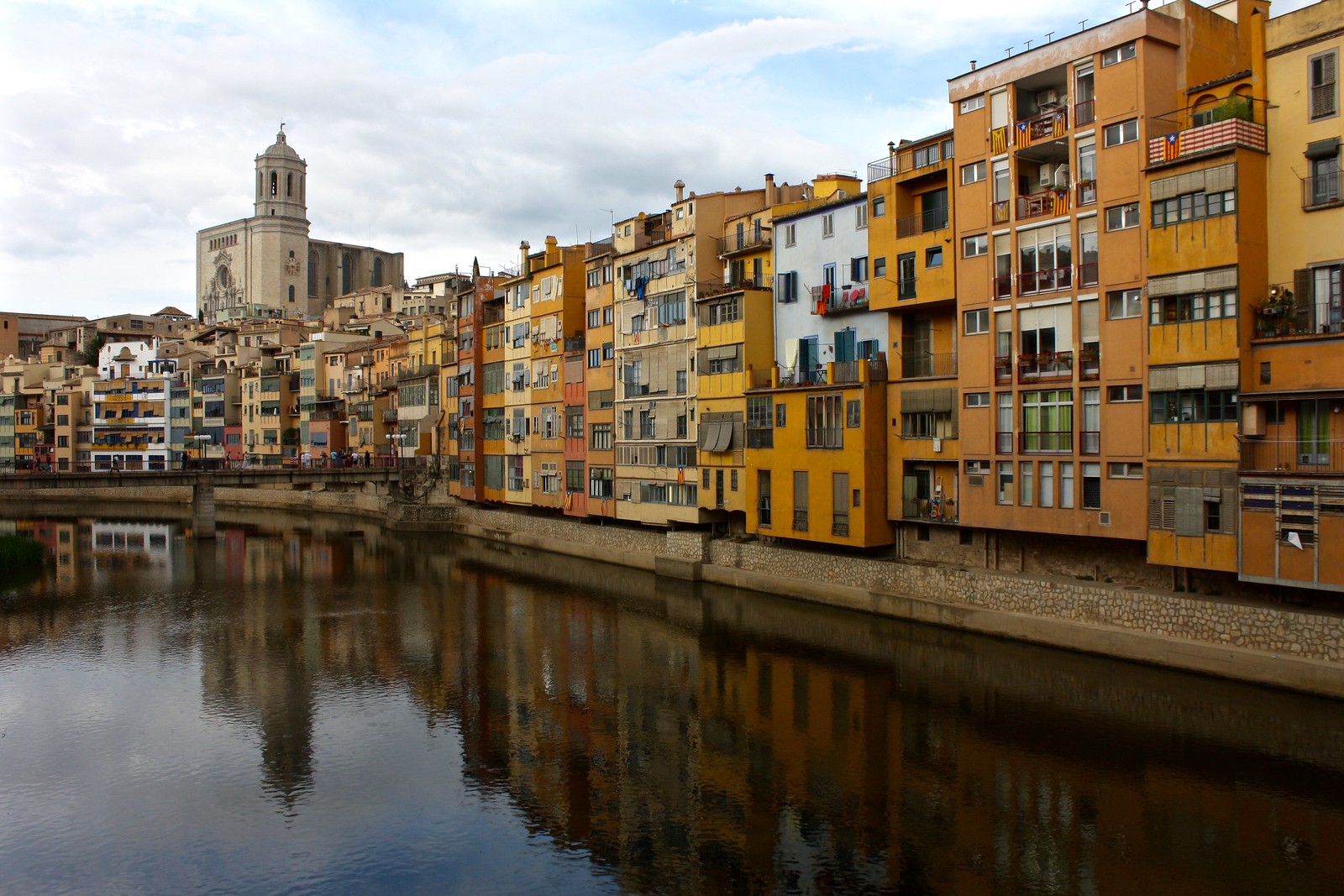 |
| Onyar River, Girona |
Girona. Barcelona’s often at the center of the Catalan Problem—whether Catalunya should be an independent state—between the Parlament’s seditious declarations and endless protests for and against secession. But a huge portion of the city’s population didn’t grow up Catalan; many are transplants from elsewhere in Spain. A great place to escape the rabble-rousers and experience the essence of Catalan culture is Girona. It’s easy to stumble into a restaurant and find classic Catalan dishes like sausage and beans or roasted veggies. Every other balcony seems to be festooned with a pro-independence flag, and you can even debate the merits of leaving Spain in a secessionist shopfront. And no need to elbow fellow tourists in the Boqueria—the riverside market lets you relax in the fresh, open air.
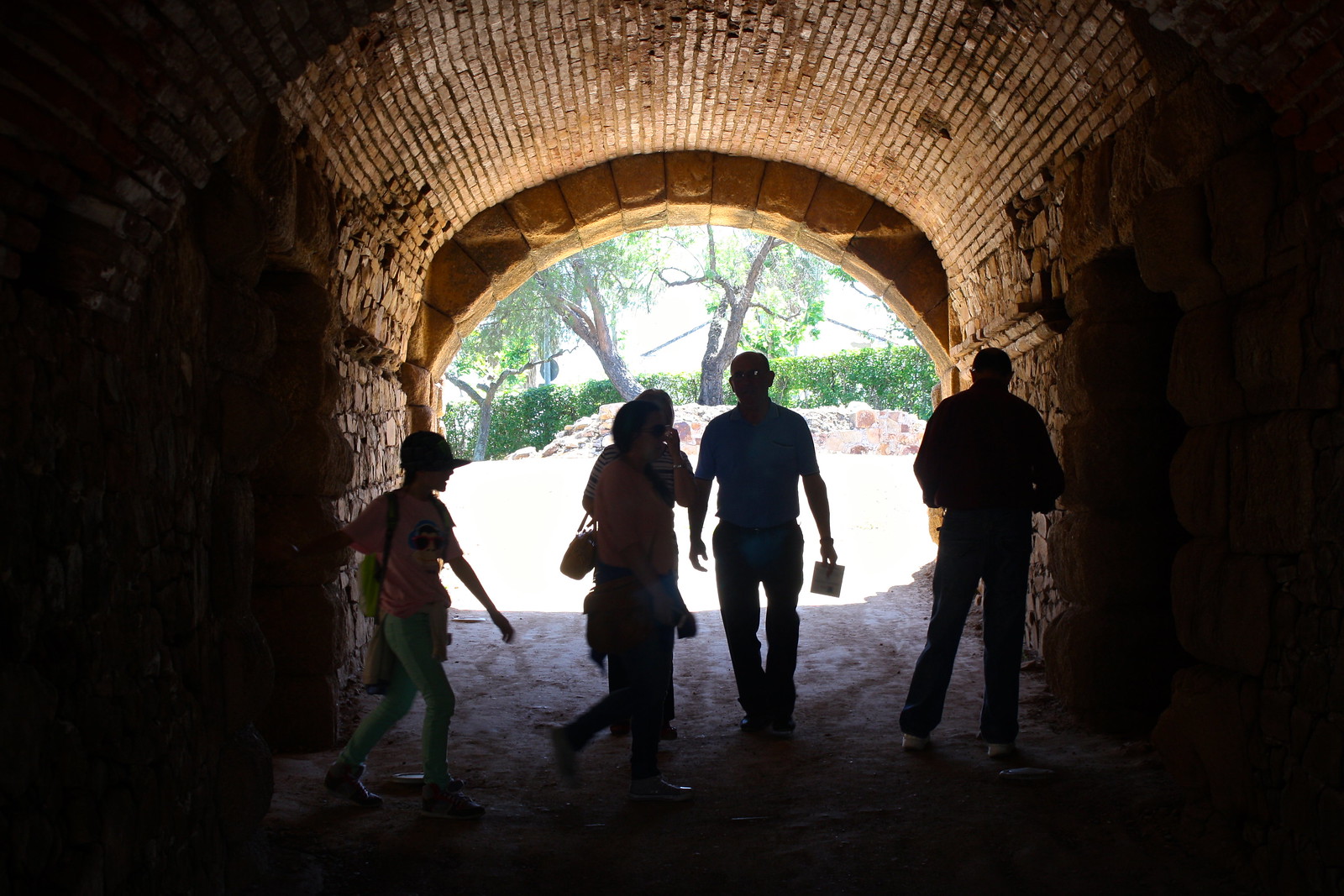 |
| Mérida |
Mérida. Barcelona’s heritage from Roman times is one of the facets that make up this jewel of a city. The Barri Gòtic occupies the same footprint as the original Roman town, and the local history museum takes you on an astonishing route throughout the excavated Roman Barcino. But honestly…it doesn’t add up to much. You don’t have to squint to see things in Mérida, though. The capital of the far-flung region of Extremadura, Mérida revels in its past as Roman Emerita Augusta. Check out a theater, forum, temple, monumental arch, aqueduct, amphitheater, circus, and a bridge. Whew!
 |
| (Source: Santiago Lopez-Pastor CC BY-SA 2.0) |
Cartagena. Full disclosure: I’ve never been to this coastal Murcian city. But Cartagena—an 8-hour train ride down the Mediterranean coast from Barcelona—shares a lot in common with the Catalan capital. Its strategic natural harbor has been fought over for thousands of years, from Phoenicians and Romans to Moors and Castilians, which has left monuments like a Roman theater and multiple castles for us to visit. Today it’s the primary port for the Spanish Navy and becoming a cruise ship destination. It doesn’t have any beaches, but it’s not far from La Manga, a sandbar that stretches across a salty lagoon called the Mar Menor. Cartagena is also a hotspot for anyone interested in Modernista architecture.
Instead of Madrid, go to…
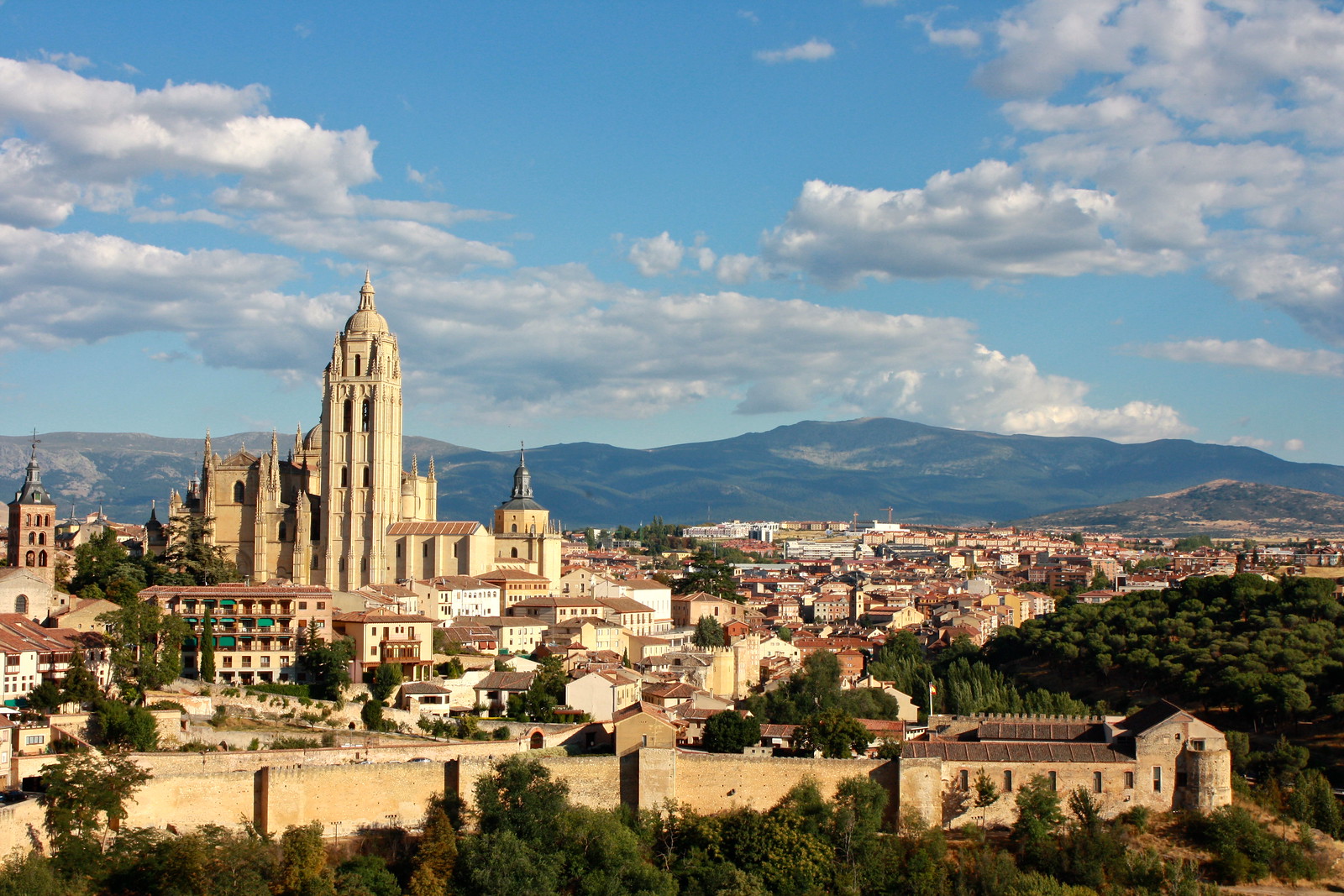 |
| Segovia seen from the Alcázar |
Segovia province. Madrid as we know it has really only been around for 500 years, and while there are no fewer than six World Heritage Sites within an hour of the Spanish capital, Madrid has a grand total of zero. Head out to Segovia (just half an hour on the high-speed train) for everything from the tallest Roman aqueduct and the youngest Gothic cathedral to a fairy-tale castle that inspired Disney’s Sleeping Beauty. Madrid’s Royal Palace lacks air-conditioning and overflows with tourists, but the Royal Palace of La Granja de San Ildefonso—complete with manicured gardens—feels more like the Spanish Versailles the Bourbon kings longed for.
 |
| (Source: Gonzalo Iza CC BY-NC-ND 2.0) |
León. In Madrid, you’re lucky to get potato chips and olives as a free tapa to accompany your drink, but in León to the north, bars and restaurants will let you take your pick from a menu of full-size tapas. Think spicy jalapeño croquetas, comforting garlic stew, and glasses of locally produced Bierzo wine on the cheap.
Instead of Sevilla, go to…
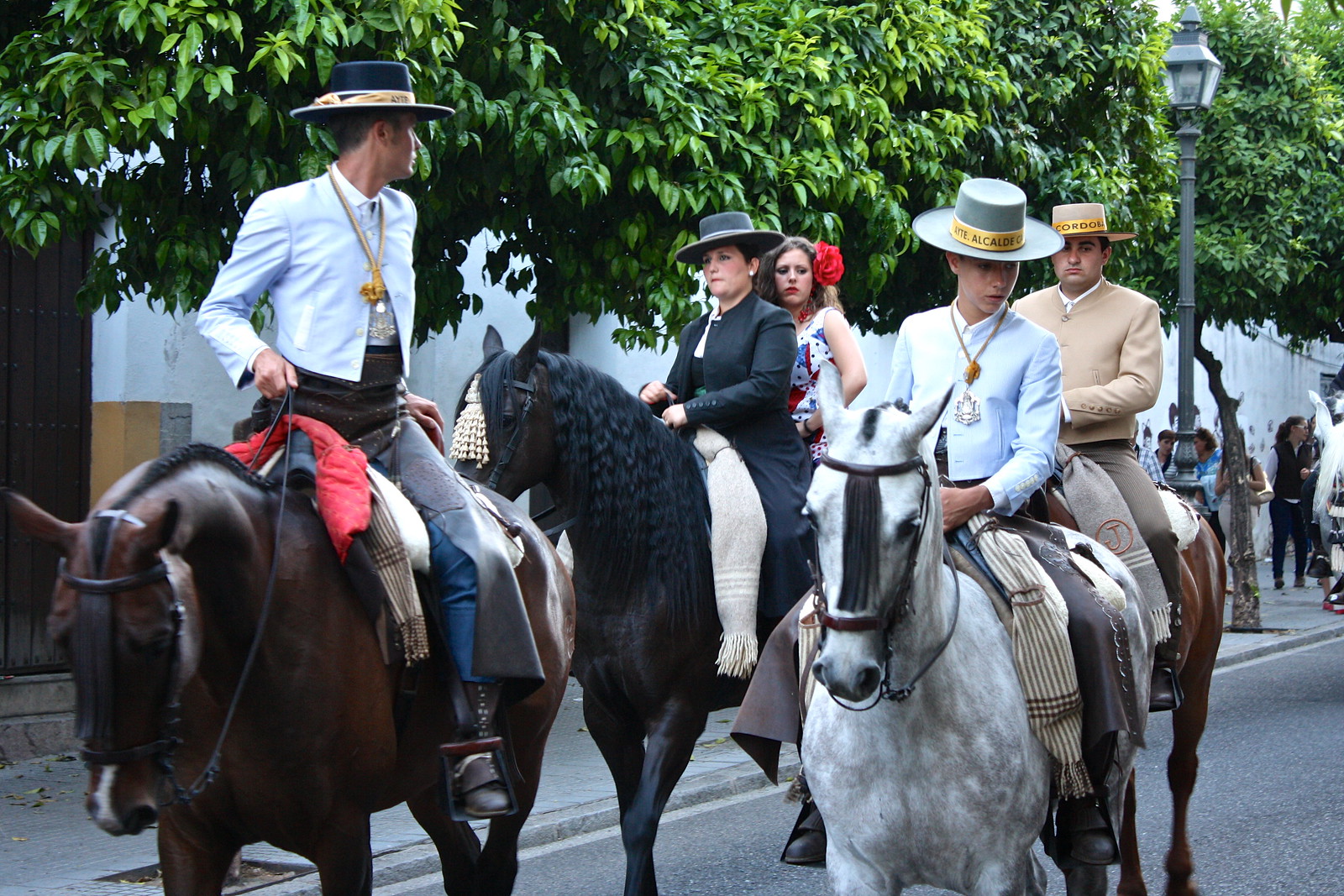 |
| Córdoba |
Córdoba. If I had to choose between Sevilla and her little sister up the river, Córdoba, I’d go all in with the latter. Sure, both have a lot in common, from a shared history as major players in Roman, Moorish, and Castilian times, to pretty Andalusian old towns set along the banks of the Guadalquivir.
However, Córdoba’s Mosque-Cathedral, whose red-and-white striped horseshoe arches seem to stretch to infinity, is a striking reminder of its time as the center of the civilized world, whereas Sevilla tore their Great Mosque down to build a gargantuan Gothic cathedral. Sevilla may have perfected the art of the tapa, but I’ll take Córdoba’s menu of exploding-with-umami salmorejo (cold tomato soup) and my guilty pleasure, fried eggplant drizzled with honey. Where Sevilla borrows sherry from Jerez, Córdoba has its very own variety of fortified wine: Montilla-Moriles. And best of all, the annual town fair isn’t elitist like Sevilla’s and closed off to those who don’t have connections—it’s open to everyone.
Cádiz province. Sevilla is famous for its pescaíto frito (fried fish), its old-man bars that serve petite glasses of dry and sweet sherry, and its cool, shaded alleys whose whitewashed walls regulate scorching summer temps. But you can find all of this and more outside the city limits, so cut out the middle man and head straight to the source. Witness the almadraba or traditional tuna-catch in Barbate, enjoy half a dozen varieties of sherry at bodegas in El Puerto de Santa María, and chill out at Vejer de la Frontera, one of many pueblos blancos or whitewashed villages that dot the countryside.
 |
| Holy Week Museum, Zamora |
Zamora. My friends who live in Sevilla tell me they usually leave town during Semana Santa because throngs of locals and foreigners alike drive urban life to a halt, drawn as they are to the city’s bombastic Holy Week processions. Zamora’s pasos, true to the sober religiosity of northern Spain, are equally impressive—yet unheard of outside of Spain.
Instead of Málaga, go to…
 |
| Alcazaba de Almería |
Almería. Cut off from the rest of Andalucía by mountain ranges and not yet on the high-speed rail line, Almería can feel like a world of its own. But once you arrive, you’ll feel right at home in this prototypical Andalusian city. There are plenty of beaches to spread out on, and the rugged terrain of Cabo de Gata National Park lies a short drive down the coast. Whereas Málaga has a unique, “one-armed” single-tower cathedral, Almería’s is also distinct in that it looks more like a fortress—complete with battlements—although the city’s own alcazaba or Moorish hilltop castle rivals Málaga’s. In recent years, Málaga has remade itself as an arts destination, with several big-name museums opening in town (e.g., Carmen Thyssen, Pompidou Centre, etc.), but you won’t find lines at Almería’s collection of art museums, which includes one dedicated to the guitar and another that specializes in photography.
Instead of Granada, go to…
 |
| Jaén at the Blue Hour |
Jaén. There’s no one-upping the Alhambra—that much is true. Still, Jaén shares so much with its neighbor to the south. Expect to receive a free tapa to nibble on with your drink at bars that range from 150 days to 150 years old. Reaching the hilltop castle will give your thighs a workout, but once you’re there, the views beat those you get of Granada from the Alhambra. Jaén, whose name comes from the Arabic word for “crossroads,” Yayyán, has one of the largest remaining Moorish baths in Spain, and its old town is stitched together by the winding streets and alleys of an old medina. If you listen hard enough, you may even hear locals break out into spontaneous expressions of flamenco.
Instead of San Sebastián, go to…
Logroño. Yeah, there’s no beach, but let’s be honest: the pintxos are half the reason you go to San Sebastián anyway. These two-to-three-bite tapas fastened to a slice of baguette encourage creativity and let you taste a wide variety of dishes as you hop from one bar to the next. San Sebastián, however, is one of the most expensive cities in the country, but Logroño—just two hours south—offers a pincho scene at a more reasonable price. You could spend weeks (or one night!) getting to know all the bars and restaurants packed into Calle Laurel, or you could fancy yourself a pilgrim on the Camino by chasing yellow arrows through the old town. Plus, with Logroño being the capital of Spain’s Rioja wine region, there’s no better place to explore wineries that produce the country’s most recognizable wine.
Instead of Santiago de Compostela, go to…
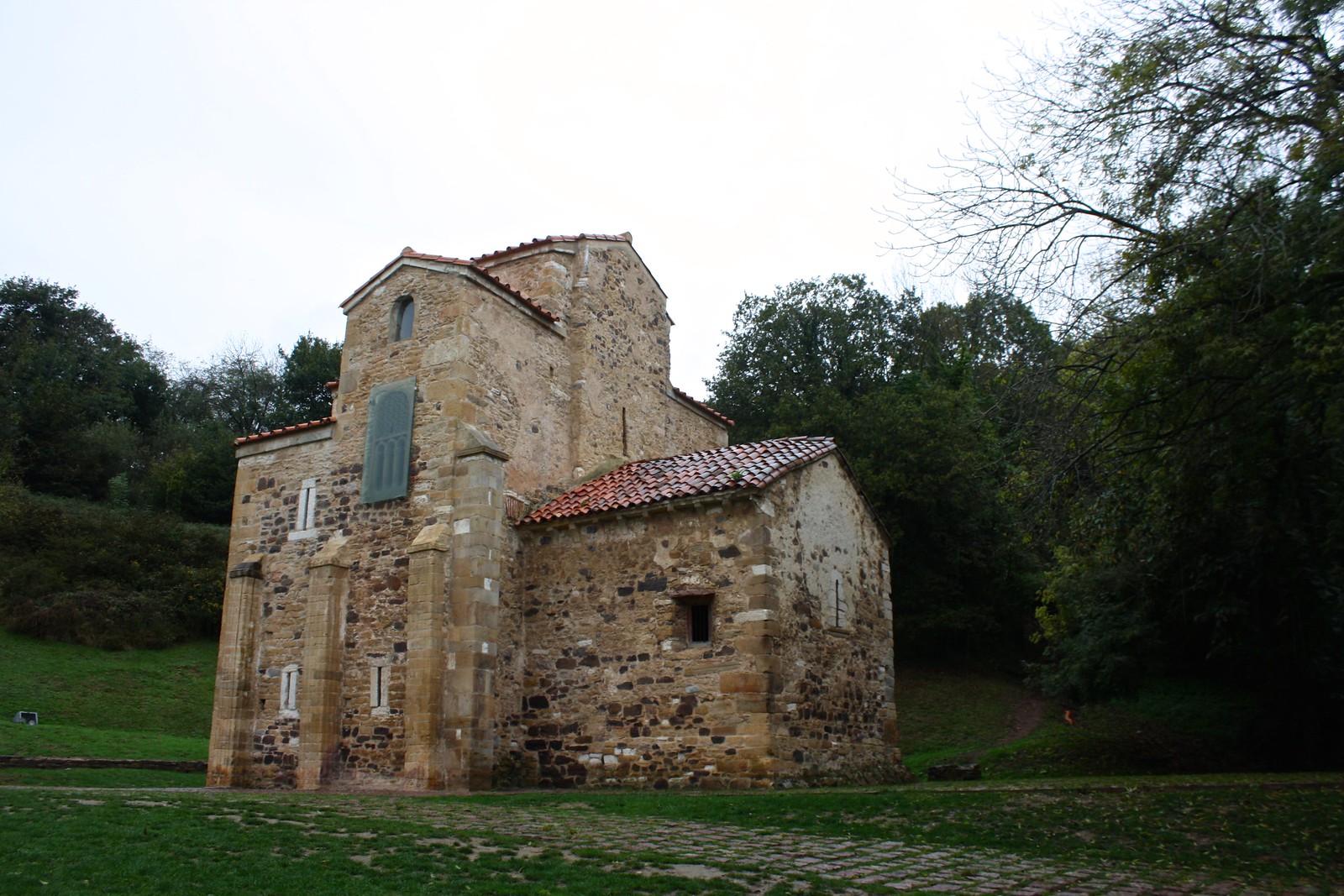 |
| Church of San Miguel de Lillo, Oviedo |
Oviedo. I know, I know, how can I possibly recommend that y’all don’t visit the city where I lived for two years? I’ve sung Santiago’s praises for years on this blog, but during the warmer months, stinky, disoriented pilgrims flood the old town (of which I myself am guilty). If you’re willing to skip the whole St. James connection, the Asturian capital checks off all the same boxes as Santiago.
You’ve got those lush, green surroundings fed by a rainy climate. The granite-lined streets of Oviedo’s old town invite you to walk past colorful shops, restaurants, and homes. There’s a cathedral—of course!—with connections to the deep Middle Ages at least as old as Santiago’s…but whose beauty really surpasses it. You’ve got your pick of three churches to visit built in the pre-Romanesque style not found anywhere else in the world. And who could turn down a warm bowl of fabada, Asturian bean-and-sausage stew?
Instead of visiting Gaudí’s buildings in Barcelona, go to…
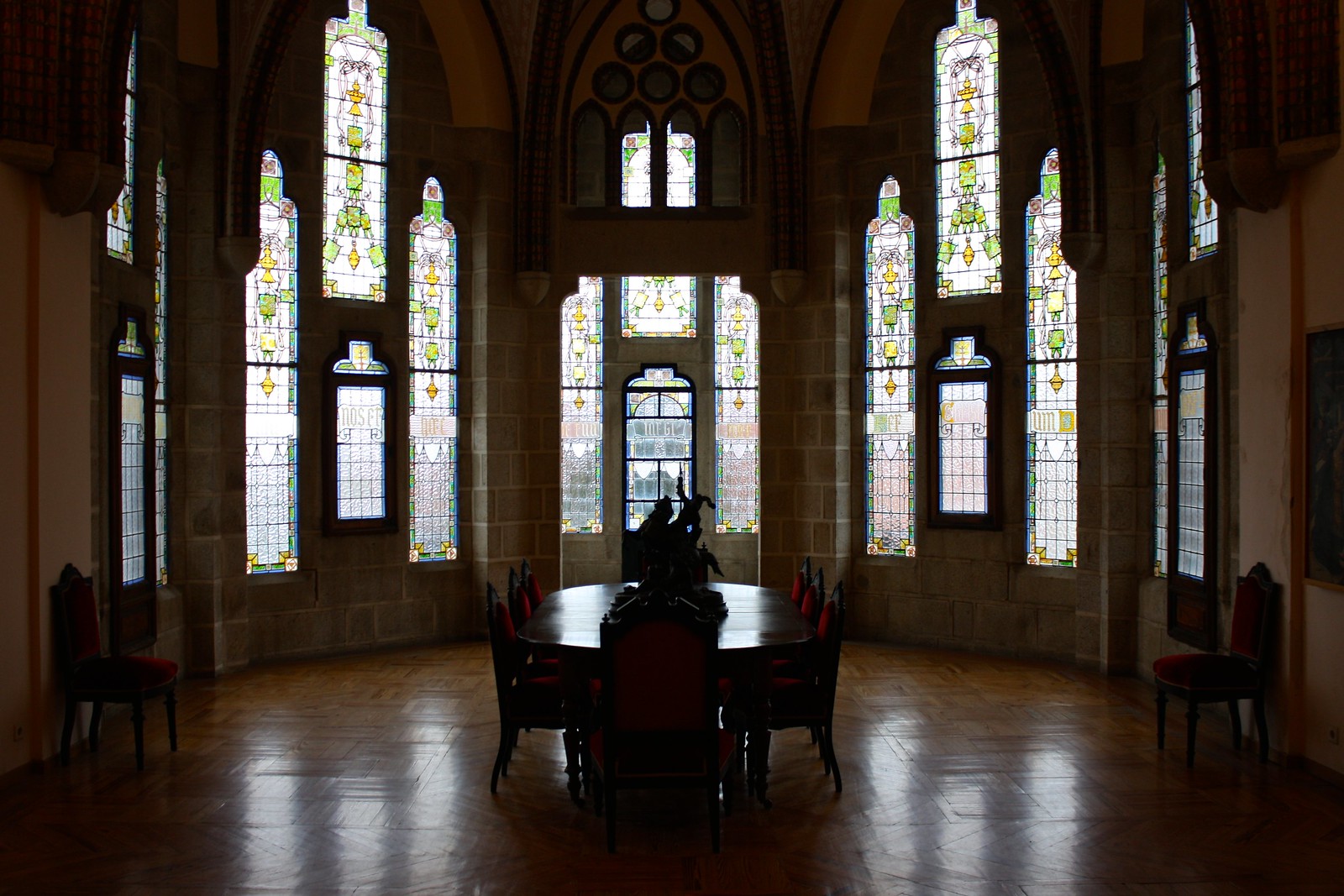 |
| Episcopal Palace, Astorga |
The three buildings Gaudí designed in northern Spain. Yes, it’s really convenient that there are no fewer than seven works by Antoni Gaudí within the city limits of Barcelona. But did you know you could encounter his fabulous homes and churches without the maddening crowds? Start at Casa de los Botines in León, hop over to Astorga to check out the Episcopal Palace, and then head to El Capricho de Gaudí, a beach cottage in Comillas, Cantabria.
You don’t even have to leave Barcelona to enjoy other Modernista-style buildings not by Gaudí himself. The stained-glass skylight in Lluís Domènech i Montaner’s Palau de la Música Catalana will leave you dazzled, while his sprawling Hospital de la Santa Creu i Sant Pau will overwhelm you with its scale. The Casa Amatller, designed by Josep Puig i Cadafalch, is neighbors with Gaudí’s Casa Batlló…but it features open doors instead of long lines out the door.
Instead of walking the French Way of the Camino de Santiago, walk the…
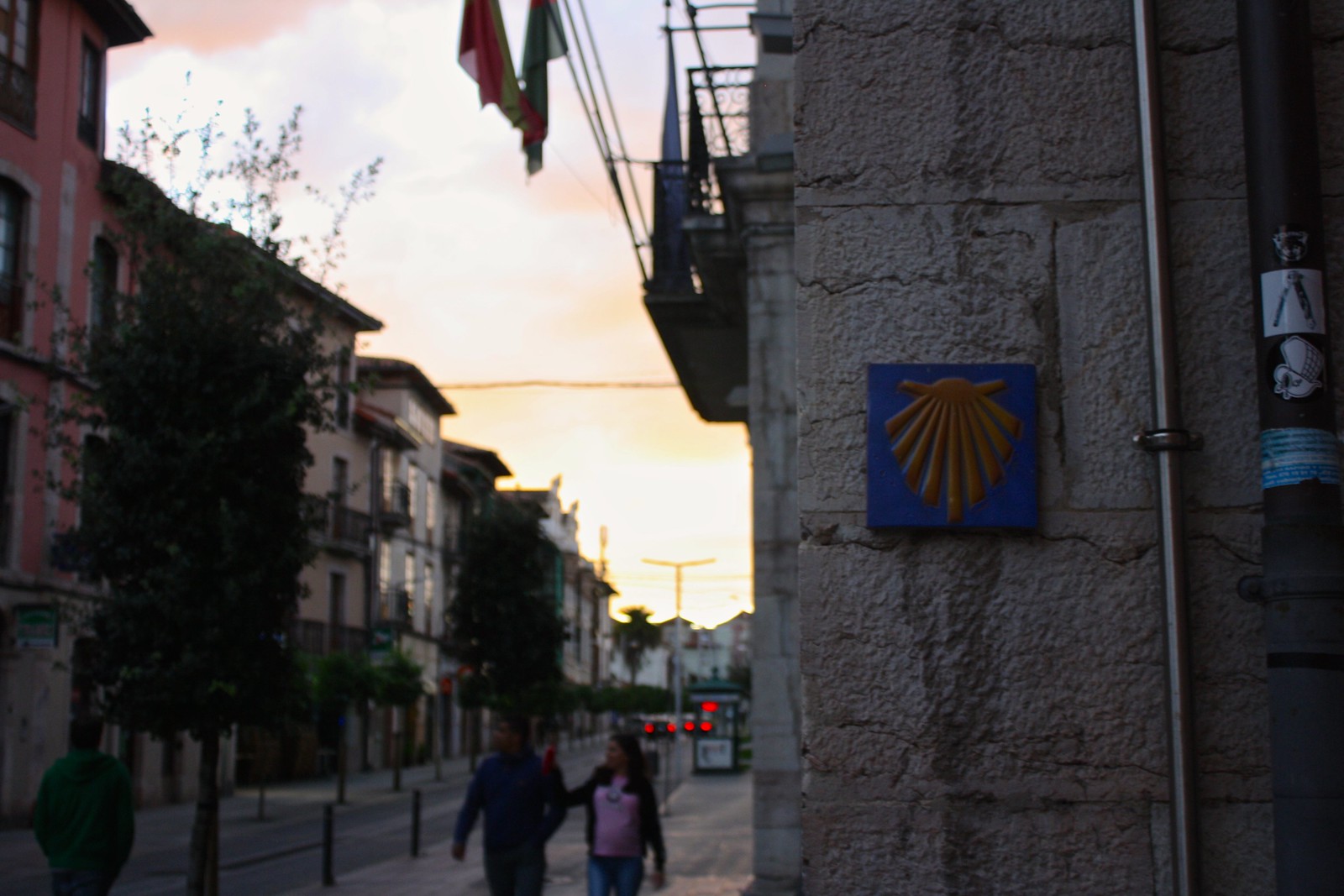 |
| Shell in Llanes |
Camino del Norte—the Northern Route. The Way of St. James has exploded in popularity in recent years, but most pilgrims tend to stick to the French Way that begins in the Pyrenees and runs across most of Spain’s flat (read: monotonous), northern plateau. Despite what some may say, the French route isn’t the “real” or “official” Camino…just the most popular.
Stick to the Camino del Norte and you’ll get the solitary, introspective experience pilgrims used to have on the camino francés. Plus, you’ll also be treated to an endless buffet of cultures—from Basque to Galician—charming coastal villages (Llanes and Ribadesella are some of my favorites), and a variety of landscapes, including some of Spain’s best beaches and rugged mountain parks.
Instead of attending San Fermín or La Tomatina, go to…
 |
| (Source: Diego Pérez CC BY-NC-ND 2.0) |
Las Hogueras de San Juán. Spaniards from A Coruña to Alicante observe St. John’s Eve (June 23rd) as a summer solstice celebration. Unlike Pamplona’s polarizing festivities dedicated to San Fermín (and the bullfighting gods), Spaniards across the country embrace the feast day of San Juán; i.e., it’s not just for tourists. Look for bonfires set up after dark in city plazas or along the beach. In Galicia, it’s good luck to hop over (small) bonfires—as long as you’ve had your fill of freshly roasted sardines.
Getting to the Valencian village of Buñol for the tomato-flinging fest called La Tomatina can be a logistical nightmare. Consider instead the Batalla del Vino. Held in the Riojan town of Haro (not far from Pamplona), the “Battle of Wine” draws revelers every summer who show up in white t-shirts and pants and “attack” each other with copious amounts of wine. A fun way to get purple clothes on the cheap!
Instead of the Mediterranean coast, go to…
The Atlantic coast. Sorry, the water’s gonna be cold, but Spain’s northern beaches make up for it with stunning scenery framed by craggy mountains, a plethora of cheeses both mild and smelly, and better seafood. It’s not uncommon to have a beach all to yourself (there’s even a Playa del Silencio), and Galicia’s Atlantic Islands National Park welcomes you to white-sands beaches that are accessible by a short ferry ride yet still protected from overdevelopment.
Instead of the beach, go to…
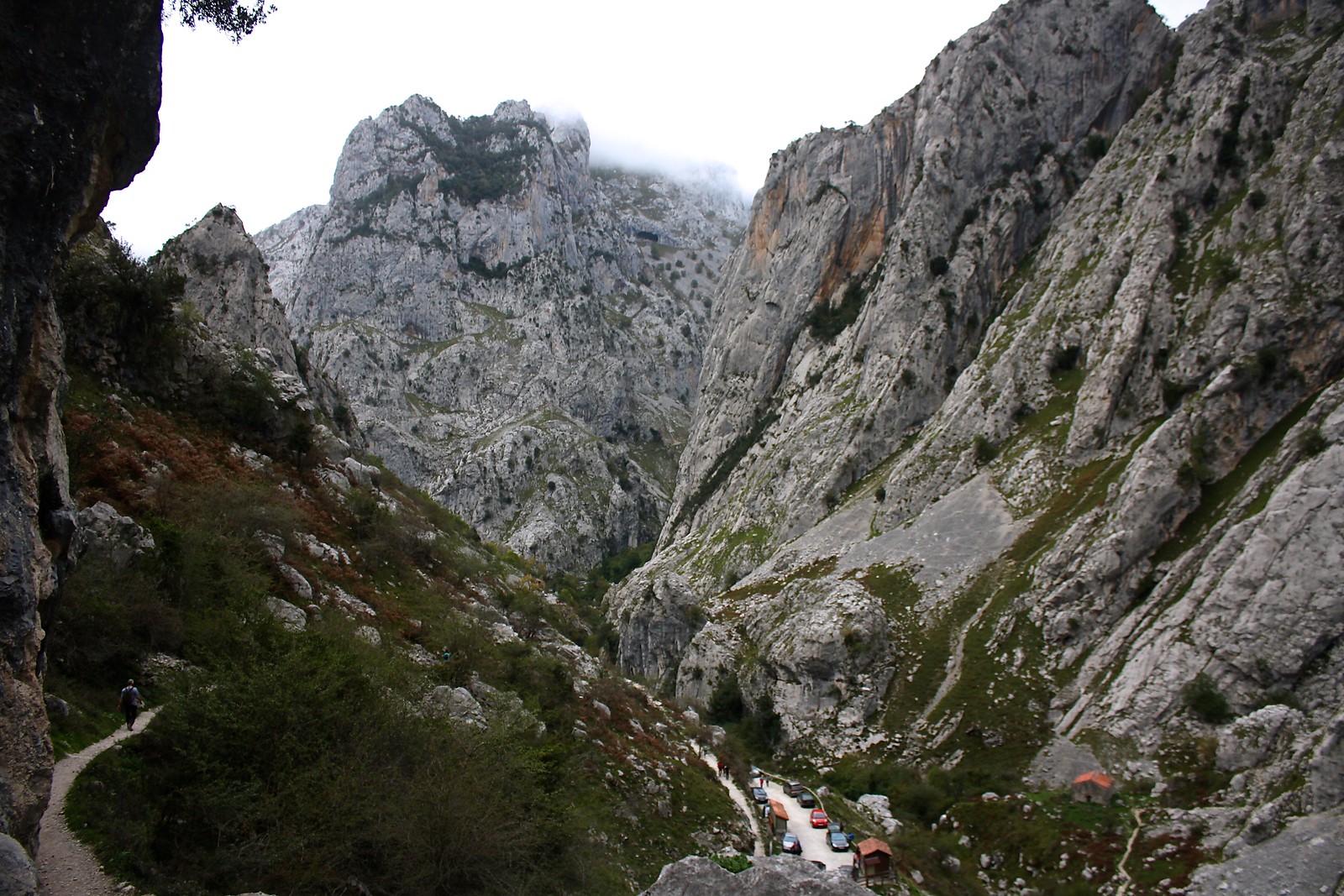 |
| Cares River Gorge, Picos de Europa |
The mountains. Spain boasts thousands of miles of coastline, but did you know that it’s also Europe’s second-most mountainous country (after Switzerland)? You won’t find the high rises of Benidorm in the Pyrenees, that’s for sure. Instead, you’ll be welcomed with absolutely stunning scenery, a hearty cuisine, and a healthy dose of solitude.
If you’re into skiing, you have your pick of countless ski resorts across the Pyrenees Mountains on the border with France, plus there’s always the Sierra Nevada, Europe’s southernmost ski destination. Great hiking opportunities abound in the Sierra de Guadarrama, right outside Madrid, or the Picos de Europa, the “Peaks of Europe” in Asturias and Cantabria. My personal favorite? Head to the mountains of Bierzo and cozy up by the fire in a thatched-roof stone hut, a glass of red Mencía in hand, and a platter of cured-beef cecina slices in front of you.

